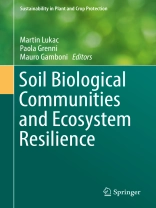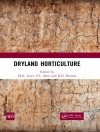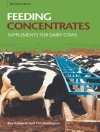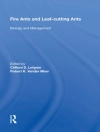This volume explores current knowledge and methods used to study soil organisms and to attribute their activity to wider ecosystem functions. Biodiversity not only responds to environmental change, but has also been shown to be one of the key drivers of ecosystem function and service delivery. Soil biodiversity in tree-dominated ecosystems is also governed by these principles, the structure of soil biological communities is clearly determined by environmental, as well as spatial, temporal and hierarchical factors. Global environmental change, together with land-use change and ecosystem management by humans, impacts the aboveground structure and composition of tree ecosystems. Due to existing knowledge of the close links between the above- and belowground parts of terrestrial ecosystems, we know that soil biodiversity is also impacted. However, very little is known about the nature of these impacts; effects on the overall level of biodiversity, the magnitude and diversity of functions soil biodiversity generates, but also on the present and future stability of tree ecosystems and soils. Even though much remains to be learned about the relationships between soil biodiversity and tree ecosystem functionality, it is clear that better effort needs to be made to describe and understand key processes which take place in soils and are driven by soil biota.
İçerik tablosu
1. Introduction: the role of soil biodiversity in ecosystem productivity and resilience.- 2 Ecosystem services provided by soil microorganisms.- 3. Comparison of two molecular methods to assess soil microbial diversity.- 4. Towards integrated understanding of the rhizosphere phenomenon as ecological driver: can rhizoculture improve agricultural and forestry systems?.- 5. Impact of agricultural land management on soil bacterial community: a case study in the Mediterranean area.- 6. A metagenomic study on the effect of aboveground plant cover on soil bacterial diversity.- 7. What lies beneath: root-associated bacteria to improve the growth and health of olive trees.- 8. Norway spruce fine roots and fungal hyphae grow deeper in forest soils after extended drought.- 9. Ectomycorrhizal diversity in beech dominated stands in central Europe.- 10. Arbuscular mycorrhizal fungal communities pushed over the edge – lessons from extreme ecosystems.- 11. An intact soil core bioassay for cultivating forest ectomycorrhizal fungal communities.- 12.Potential role of beneficial soil microorganisms in plant tolerance to abiotic stress.- 13.Microbial communities, functional genes, and nitrogen cycling processes as affected by tree species.- 14. Ectomycorrhizal fungal responses to forest liming and wood ash addition: review and meta-analysis.- 15. β-glucosidase activity of forest soil as an indicator of soil carbon accumulation.- 16. Linking ecosystem variability and carbon sequestration: estimation of sequestered carbon in natural forests and perennial crops- 17. Bioactive peptaibols of forest-derived trichoderma isolates from section Longibrachiatum.- 18. Plant-assisted bioremediation: an ecological approach for recovering multi-contaminated areas.- 19. Bioavailability of polycyclic aromatic hydrocarbons in soil as affected by microorganisms and plants.- 20. Soil biodiversity and tree crops resilience












